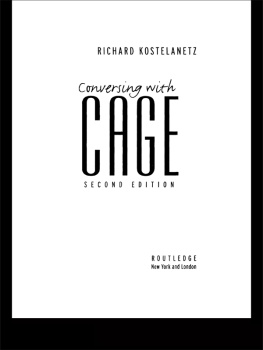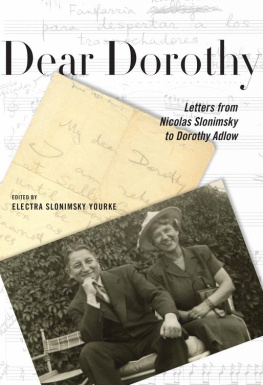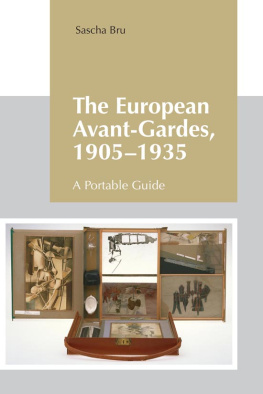H. R. Brittain, after interning with Richard Kostelanetz, became an actor in New York City.
Richard Carlin, long an editor in New York book publishing, commissioning the first two editions of this Dictionary , now works for Oxford University Press, in addition to writing his own books mostly about music.
Mark Daniel Cohen works as a professor of philosophy and an assistant dean at The European Graduate School.
John Robert Colombo, see entry.
Tony Coulter conducts a regular program of new music at WFMU-FM in New Jersey while residing in Portland, OR.
Michal Ulrike Dorda, once in New York, may now be residing in Berlin.
Charles Doria has published books of his poetry and translations from classical languages.
Nona Eleanor Ellis, an architect and sometime professor of architecture, has worked for decades in financing real estate.
Bob Grumman, see entry.
Robert Haller worked for many years at the Anthology Film Archives in New York.
Geof Huth, see entry.
Carter Kaplan, see entry.
Katy Matheson (19482005) was a dance writer based New York City.
Gloria S. & Fred W. McDarrah together produced The Photography Encyclopedia (1998). By himself, Fred was long the staff photographer at The Village Voice .
Michael Peters lives and teaches in upstate New York.
Ben Piggott, now an editor at Routledge, commissions books on theater and sells basketball cards in London.
Douglas Puchowskis elaborate bibliographies for the second edition of this Dictionary appeared eponymously as his Documentation (2018).
John Rocco, after interning with Richard Kostelanetz, became a professor of English at SUNY Maritime College in Throgs Neck, NY.
Igor Satanovsky, born in the Ukraine in 1969, works as a designer in New York publishing, in addition to publishing the Russian-language literary journal Novaya Kozha .
Nicolas Slonimsky, see entry.
Fred Truck, see entry.
Contents
Guide
Third edition published 2019
by Routledge
2 Park Square, Milton Park, Abingdon, Oxon, OX14 4RN
and by Routledge
711 Third Avenue, New York, NY 10017
Routledge is an imprint of the Taylor & Francis Group, an informa business
2019 Richard Kostelanetz
The right of Richard Kostelanetz to be identified as author of this work has been asserted by him in accordance with sections 77 and 78 of the Copyright, Designs and Patents Act 1988.
All rights reserved. No part of this book may be reprinted or reproduced or utilised in any form or by any electronic, mechanical, or other means, now known or hereafter invented, including photocopying and recording, or in any information storage or retrieval system, without permission in writing from the publishers.
Trademark notice: Product or corporate names may be trademarks or registered trademarks, and are used only for identification and explanation without intent to infringe.
First edition published by Schirmer Books, an imprint of the Gale Group 1993
Second edition published by Routledge 2001
British Library Cataloguing-in-Publication Data
A catalogue record for this book is available from the British Library
Library of Congress Cataloging-in-Publication Data
Names: Kostelanetz, Richard, author.
Title: A dictionary of the avant-gardes / Richard Kostelanetz.
Description: Third edition. | New York : Routledge, 2019. |
Includes bibliographical references.
Identifiers: LCCN 2018027789 (print) | LCCN 2018029413 (ebook) |
ISBN 9781351267120 (Master) | ISBN 9781351267113 (Adobe Reader) |
ISBN 9781351267106 (ePub3) | ISBN 9781351267090 (Mobipocket Unencrypted) |
ISBN 9781138577305 (hardback : alk. paper) | ISBN 9781351267120 (ebook)
Subjects: LCSH: Arts, Modern20th centuryDictionaries. |
Arts, Modern21st centuryDictionaries. |
Avant-garde (Aesthetics)History20th centuryDictionaries. |
Avant-garde (Aesthetics)History21st centuryDictionaries.
Classification: LCC NX456 (ebook) | LCC NX456 .K67 2019 (print) |
DDC 700/.411dc23
LC record available at https://lccn.loc.gov/2018027789
ISBN: 978-1-138-57730-5 (hbk)
ISBN: 978-1-351-26712-0 (ebk)
Typeset in Times Ten and Futura Std
by Apex CoVantage, LLC
For Nicolas Slonimsky (18941995)
Cher matre
It takes approximately twenty years to make an artistic curiosity out of a modernistic monstrosity, and another twenty to elevate it to a masterpiece.
Nicolas Slonimsky, Lexicon of Musical Invective (1953)
My principal reason for having done, later redoing, and now redoing again a quarter-century after, a book of this title would be to defend the continuing relevance of the epithet avant-garde , which has frequently appeared in my own critical writing. A second reason is that I enjoy reading cultural dictionaries myself and own a goodly number of them; but as my library has lacked any volume resembling a dictionary of avant-gardes, the first reader for any book emblazoned with that title would be myself. A third reason is that Ive come to think there is only one art, called Art, and thus that dance, literature, etc., are merely categorical conveniences, designed to make the history and the material of Art more accessible to students and other specialized beginners.
My basic measures of avant-garde work are first esthetic innovation and then initial unacceptability. Add to this my own taste for art that is extreme, unique, distinct, coherent, witty, technological, and esthetically resonant. (An artists courage in the choice of subject, such as scatology, say, or child abuse, is not avant-garde if the artists esthetic is traditional. Nor is the first painting by a three-handed dwarf avant-garde by virtue of the peculiarities of its author.) It follows that the most consequential artists, in any medium, are those who make genuine discoveries about the possibilities of art. Nonetheless, the best avant-garde art offers, much like the best traditional art, enlightened intelligence and heightened experience.
Though one often hears about the death of the avant-garde or the crisis of the avant-garde, usually from cultural conservatives or publicists with cemeteries to defend, it is not the purpose of this book to engage in an argument I take to be irrelevant at best. Though most entries here feature modern avant-garde activities, major historical precursors, some of whom worked centuries ago, are acknowledged as well. While the epithet avant-garde is applicable to other cultural domains, this book focuses upon the arts, broadly considered. My first editor, a dance aficionado, proposed including the basketball player Daryl Dawkins for epitomizing the slam dunk, which is measurably a monumental choreographic innovation, though not commonly regarded as such. My more recent editor made his unique contribution as well, and I now included the man whose alternative choreography changed competitive high-jumping. One recurring theme is that avant-garde art doesnt always come pretentiously dressed.
Proclaiming the avant-gardes death is no more acceptable than the claim, from another corner, of one or another group to represent the avant-garde to the exclusion of all others. The plural avant-gardes in the title is appropriate, as this book contains entries on individuals or developments representing opposed positions, if not contrary esthetics, both clearly innovative and initially unacceptable. As I warn in the entry on Pluralism, beware of anyone or any group declaring itself the sole avant-garde, especially if they exclude or ignore people doing work that is roughly similar or closely related. Be even more wary if they try to sell you anything, intellectual as well as physical. Suspect it to be a road map directing all traffic to a dead end.












